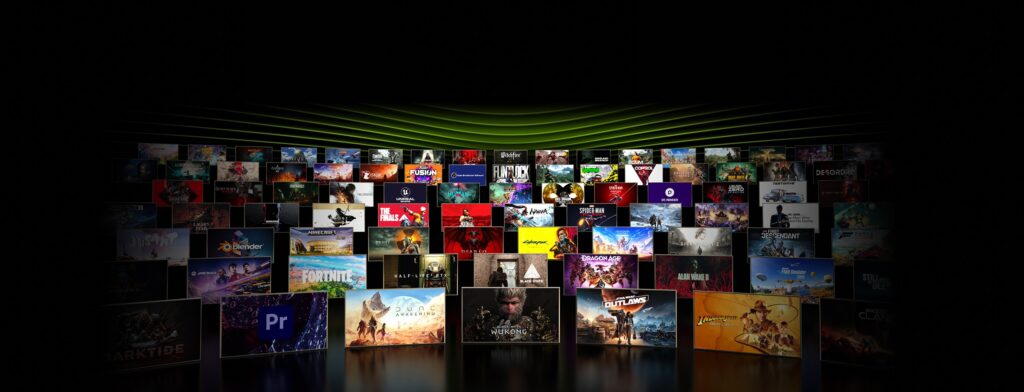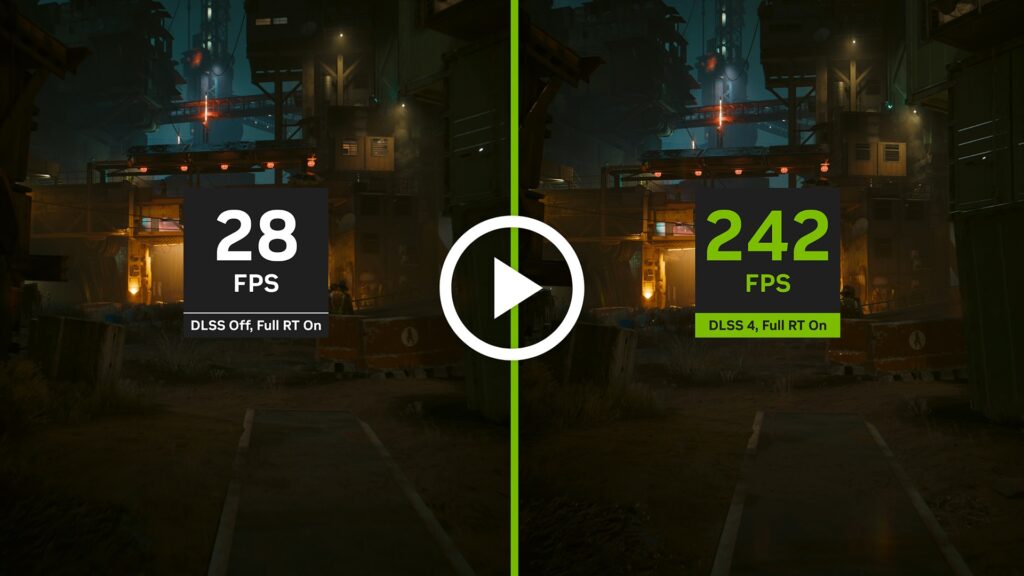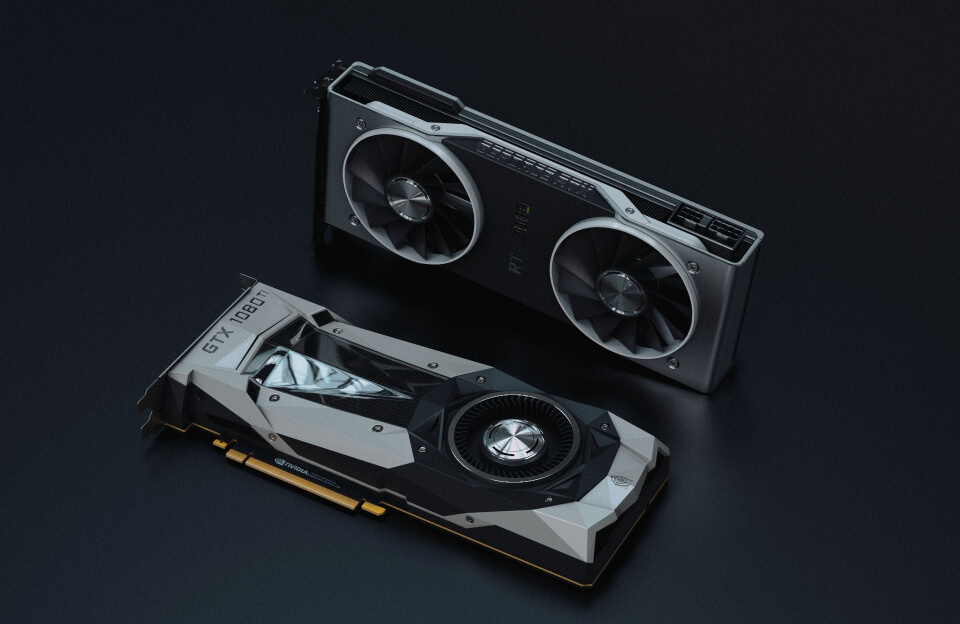Supreme Speed. Superior Visuals. Powered by AI.
DLSS is a revolutionary suite of neural rendering technologies that uses AI to boost FPS, reduce latency, and improve image quality. The latest breakthrough, DLSS 4, brings new Multi Frame Generation and enhanced Ray Reconstruction and Super Resolution, powered by GeForce RTX™ 50 Series GPUs and fifth-generation Tensor Cores. DLSS on GeForce RTX is the best way to play, backed by an NVIDIA AI supercomputer in the cloud constantly improving your PC’s gaming capabilities.
See How AI Enhances Your Games

DLSS 4: The Future of AI-Powered Gaming with GeForce RTX 50 Series
Introduction
NVIDIA’s Deep Learning Super Sampling (DLSS) has revolutionized gaming by using AI to enhance performance and visuals. With DLSS 4, the latest breakthrough in neural rendering, NVIDIA is pushing the boundaries of what’s possible in gaming. Powered by the next-generation GeForce RTX 50 Series GPUs and fifth-generation Tensor Cores, DLSS 4 introduces cutting-edge features like Multi Frame Generation, enhanced Ray Reconstruction, and Super Resolution, delivering unprecedented performance and image quality.
What is DLSS?
DLSS (Deep Learning Super Sampling) is NVIDIA’s AI-powered rendering technology that uses deep learning to boost frame rates, reduce latency, and improve visual fidelity. By leveraging the power of AI supercomputers in the cloud, DLSS continuously learns and optimizes gaming performance, ensuring the best possible experience for gamers.
DLSS 4: The Next Evolution
With DLSS 4, NVIDIA introduces groundbreaking advancements that redefine real-time rendering:
1. Multi Frame Generation
DLSS 4 takes frame generation to the next level by analyzing multiple frames simultaneously, producing smoother motion and higher fidelity. This results in:
- Higher FPS – AI generates additional frames, drastically improving performance.
- Reduced Latency – Optimized for competitive gaming with faster response times.
- Sharper Motion – Eliminates ghosting and artifacts for seamless gameplay.
2. Enhanced Ray Reconstruction
Ray tracing is computationally expensive, but DLSS 4’s improved Ray Reconstruction enhances lighting, shadows, and reflections with AI-powered denoising. Benefits include:
- More Accurate Global Illumination – Realistic lighting with minimal performance cost.
- Crisper Reflections & Shadows – AI fills in details for lifelike visuals.
- Better Upscaling – Maintains clarity even at lower base resolutions.
3. Super Resolution (Next-Gen AI Upscaling)
DLSS 4’s Super Resolution is smarter than ever, using advanced neural networks to upscale lower-resolution images without sacrificing detail. Gamers can expect:
- 4K Quality from 1080p/1440p – AI reconstructs missing pixels for ultra-sharp images.
- Optimized for RTX 50 Series – Fifth-gen Tensor Cores accelerate AI processing.
- Wider Game Support – Expanded compatibility across new and legacy titles.
Powered by GeForce RTX 50 Series & 5th-Gen Tensor Cores
DLSS 4 is designed to harness the full power of NVIDIA’s upcoming RTX 50 Series GPUs, featuring:
- Fifth-Generation Tensor Cores – Faster AI processing for real-time neural rendering.
- Improved RT Cores – Enhanced ray tracing performance.
- Higher Bandwidth Memory – Smoother performance at ultra-high resolutions.
Why DLSS is the Best Way to Play
- AI-Powered Performance – Get higher FPS without sacrificing visuals.
- Cloud-Based AI Training – NVIDIA’s supercomputers continuously improve DLSS for all players.
- Future-Ready Gaming – DLSS 4 ensures your RTX 50 Series GPU stays ahead of the curve.
Conclusion
DLSS 4 represents a quantum leap in AI-driven gaming, delivering supreme speed, superior visuals, and unmatched efficiency. With Multi Frame Generation, enhanced Ray Reconstruction, and next-gen Super Resolution, NVIDIA continues to lead the industry in real-time AI rendering.
The GeForce RTX 50 Series and fifth-gen Tensor Cores will unlock the full potential of DLSS 4, making it the ultimate choice for gamers who demand the best performance and image quality.
Are you ready for the future of gaming? 🚀


